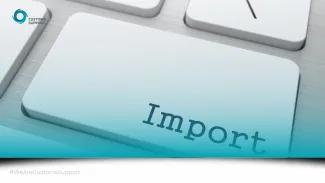The Customs Authority will check if the import declaration matches the ATO. The Aangifte Tijdelijke Opslag (ATO), which translates into the Declaration of Temporary Storage, is the carrier’s responsibility when the goods are unloaded. If there are discrepancies, the Customs Authority will refuse the import. They will also check if the goods are available, in other words, if the ship has already arrived at the port. If not, the Customs Authority will deny the import declaration.
Beware of the New CVB Procedure
Many companies, especially those only trading between the United Kingdom and the European Union, have been confronted with many new procedures, rules, and regulations since Brexit. They were simply shipping their goods to Rotterdam but now have to fill out different documents and follow seemingly complex procedures.
It is essential to have a clear picture of your logistics chain and who is responsible for what. Especially when it comes to the data that needs to be supplied to the Customs Authority, you need to make sure the correct data are sent to your customs agent. If the incorrect data is sent, the Customs Authority can refuse the shipment.
Beware of the Short Time Frame
Another issue with the CVB procedure is the available time to submit the correct data to the Customs Authority. Many companies underestimate the available time, especially companies that are used to importing from countries like China. When a ship leaves China, you have weeks to submit your data. When a ship leaves the United Kingdom, you only have hours, and some of the data is only available when the ship sails.
When things don’t go as planned, there can be severe consequences. For example, let’s say a truck misses the ferry. They can just take the next one, and everything is solved. Wrong! The shipment is on another ship with a different Bill of Lading. The new Bill of Lading needs to shared with the customs agent before the ferry has reached Rotterdam.
Four Steps to Import Seamlessly
When there is an issue with a shipment, the Customs Authority may refuse entry for the goods. Usually, the point is incorrect data. The problem is that the importer of the goods and the logistics provider that is at the port to collect the system don’t have this data. You then have to wait for the shipper, the logistics provider, or the shipping line to send you the correct data.
We have developed a four-step process that companies can follow to ensure they can import seamlessly.
Step 1: Make sure all parties in your logistics flow know what is expected of them
Step 2: Make sure you provide all data and documents you provide are correct and complete
Step 3: Report your shipment as soon as possible
Step 4: Make sure to update the Bill of Lading if applicable
At Your Service
If you have any questions about the new CVB procedure or importing goods into the Netherlands, please contact one of our specialists. They are happy to answer your questions and ensure your goods are imported without hassle.














